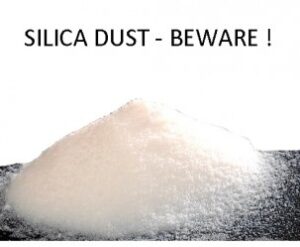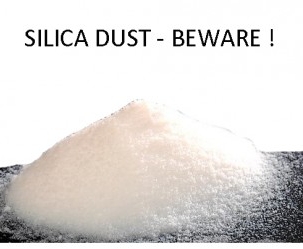On February 18th, OSHA and the National Institute for Occupational Safety and Health (NIOSH) issued a joint hazard alert regarding significant crystalline silica exposure during the manufacturing, finishing, and installation of natural and stone countertops.  This hazard alert followed reports of more than 65 workers in Spain and Israel who developed silicosis. Silicosis is an occupational lung disease that is incurable, progressively disabling, and sometimes fatal. Ten of the workers required lung transplants due to the severity of their condition.
This hazard alert followed reports of more than 65 workers in Spain and Israel who developed silicosis. Silicosis is an occupational lung disease that is incurable, progressively disabling, and sometimes fatal. Ten of the workers required lung transplants due to the severity of their condition.
Crystalline Silica is found at varying percentages in granite, sandstone, quartzite, and other rocks; exposure can vary depending on the silica content of the stone. When inhaled, minute crystalline silica particles become embedded in the lungs, setting off an inflammatory response resulting in fibrosis. Workers exposed to airborne crystalline silica are also at increased risk for lung cancer, chronic obstructive pulmonary disease, and kidney disease.
OSHA’s hazard alert has identified a combination of control methods to protect workers from exposure to silica:
- Monitoring of air to determine silica exposure levels
- Using engineering controls and safe work practices to control dust exposure
- Water spraying systems and appropriate local exhaust ventilation systems
- Implementing safe work practices
- Wet sweeping or using HEP-filtered vacuums, pre-washing stone slabs prior to cutting, grinding, etc., cleaning clothes before removing
- Identifying and isolating dust-generating operations
- Physically fencing off the work area, using enclosures
- Performing as much work as possible under controlled conditions rather than at the point of installation
- Providing recommended respiratory protection if engineering and safe work practices alone are not adequate
- NIOSH-approved N95 respirator or greater
Additionally, employers are required by OSHA’s Hazard Communication Standard to prepare and implement a written hazard communication program as well as educate employees on the dangers of silica in the workplace. GHS compliance is critical to workplace safety!







